Investigating the effect of oblique image acquisition on the accuracy of QSM and a robust tilt correction method
- PMID: 36480002
- PMCID: PMC10953050
- DOI: 10.1002/mrm.29550
Investigating the effect of oblique image acquisition on the accuracy of QSM and a robust tilt correction method
Abstract
Purpose: Quantitative susceptibility mapping (QSM) is used increasingly for clinical research where oblique image acquisition is commonplace, but its effects on QSM accuracy are not well understood.
Theory and methods: The QSM processing pipeline involves defining the unit magnetic dipole kernel, which requires knowledge of the direction of the main magnetic field with respect to the acquired image volume axes. The direction of is dependent on the axis and angle of rotation in oblique acquisition. Using both a numerical brain phantom and in vivo acquisitions in 5 healthy volunteers, we analyzed the effects of oblique acquisition on magnetic susceptibility maps. We compared three tilt-correction schemes at each step in the QSM pipeline: phase unwrapping, background field removal and susceptibility calculation, using the RMS error and QSM-tuned structural similarity index.
Results: Rotation of wrapped phase images gave severe artifacts. Background field removal with projection onto dipole fields gave the most accurate susceptibilities when the field map was first rotated into alignment with . Laplacian boundary value and variable-kernel sophisticated harmonic artifact reduction for phase data background field removal methods gave accurate results without tilt correction. For susceptibility calculation, thresholded k-space division, iterative Tikhonov regularization, and weighted linear total variation regularization, all performed most accurately when local field maps were rotated into alignment with before susceptibility calculation.
Conclusion: For accurate QSM, oblique acquisition must be taken into account. Rotation of images into alignment with should be carried out after phase unwrapping and before background-field removal. We provide open-source tilt-correction code to incorporate easily into existing pipelines: https://github.com/o-snow/QSM_TiltCorrection.git.
Keywords: QSM; QSM accuracy; electromagnetic tissue properties; oblique acquisition; quantitative susceptibility mapping; tilted slices.
© 2022 The Authors. Magnetic Resonance in Medicine published by Wiley Periodicals LLC on behalf of International Society for Magnetic Resonance in Medicine.
Figures
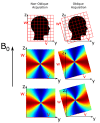
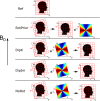

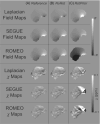

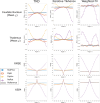

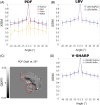

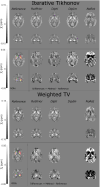
Similar articles
-
Background field removal technique using regularization enabled sophisticated harmonic artifact reduction for phase data with varying kernel sizes.Magn Reson Imaging. 2016 Sep;34(7):1026-33. doi: 10.1016/j.mri.2016.04.019. Epub 2016 Apr 22. Magn Reson Imaging. 2016. PMID: 27114339
-
Phase processing for quantitative susceptibility mapping of regions with large susceptibility and lack of signal.Magn Reson Med. 2018 Jun;79(6):3103-3113. doi: 10.1002/mrm.26989. Epub 2017 Nov 11. Magn Reson Med. 2018. PMID: 29130526
-
Background field removal technique based on non-regularized variable kernels sophisticated harmonic artifact reduction for phase data for quantitative susceptibility mapping.Magn Reson Imaging. 2018 Oct;52:94-101. doi: 10.1016/j.mri.2018.06.006. Epub 2018 Jun 15. Magn Reson Imaging. 2018. PMID: 29902566
-
Overview of quantitative susceptibility mapping using deep learning: Current status, challenges and opportunities.NMR Biomed. 2022 Apr;35(4):e4292. doi: 10.1002/nbm.4292. Epub 2020 Mar 23. NMR Biomed. 2022. PMID: 32207195 Review.
-
Patents on Quantitative Susceptibility Mapping (QSM) of Tissue Magnetism.Recent Pat Biotechnol. 2019;13(2):90-113. doi: 10.2174/1872208313666181217112745. Recent Pat Biotechnol. 2019. PMID: 30556508 Review.
Cited by
-
Normative trajectories of R 1 , R 2 *, and magnetic susceptibility in basal ganglia on healthy ageing.Imaging Neurosci (Camb). 2025 Feb 3;3:imag_a_00456. doi: 10.1162/imag_a_00456. eCollection 2025. Imaging Neurosci (Camb). 2025. PMID: 40800912 Free PMC article.
-
Investigating the relationship between thalamic iron concentration and disease severity in secondary progressive multiple sclerosis using quantitative susceptibility mapping: Cross-sectional analysis from the MS-STAT2 randomised controlled trial.Neuroimage Rep. 2024 Sep;4(3):100216. doi: 10.1016/j.ynirp.2024.100216. Neuroimage Rep. 2024. PMID: 39328985 Free PMC article.
-
Quantitative susceptibility mapping identifies hippocampal and other subcortical grey matter tissue composition changes in temporal lobe epilepsy.Hum Brain Mapp. 2023 Oct 15;44(15):5047-5064. doi: 10.1002/hbm.26432. Epub 2023 Jul 26. Hum Brain Mapp. 2023. PMID: 37493334 Free PMC article.
-
A comprehensive protocol for quantitative magnetic resonance imaging of the brain at 3 Tesla.PLoS One. 2024 May 31;19(5):e0297244. doi: 10.1371/journal.pone.0297244. eCollection 2024. PLoS One. 2024. PMID: 38820354 Free PMC article.
-
Incomplete spectrum QSM using support information.Front Neurosci. 2023 Apr 17;17:1130524. doi: 10.3389/fnins.2023.1130524. eCollection 2023. Front Neurosci. 2023. PMID: 37139523 Free PMC article.
References
-
- Jack CR, Theodore WH, Cook M, McCarthy G. MRI‐based hippocampal volumetrics: data acquisition, normal ranges, and optimal protocol. Magn Reson Imaging. 1995;13:1057‐1064. - PubMed
-
- Chen W, Zhu XH. Suppression of physiological eye movement artifacts in functional MRI using slab presaturation. Magn Reson Med. 1997;38:546‐550. - PubMed
-
- Deistung A, Schweser F, Reichenbach JR. Overview of quantitative susceptibility mapping. NMR Biomed. 2017;30:e3569. - PubMed
Publication types
MeSH terms
Grants and funding
LinkOut - more resources
Full Text Sources
Medical

